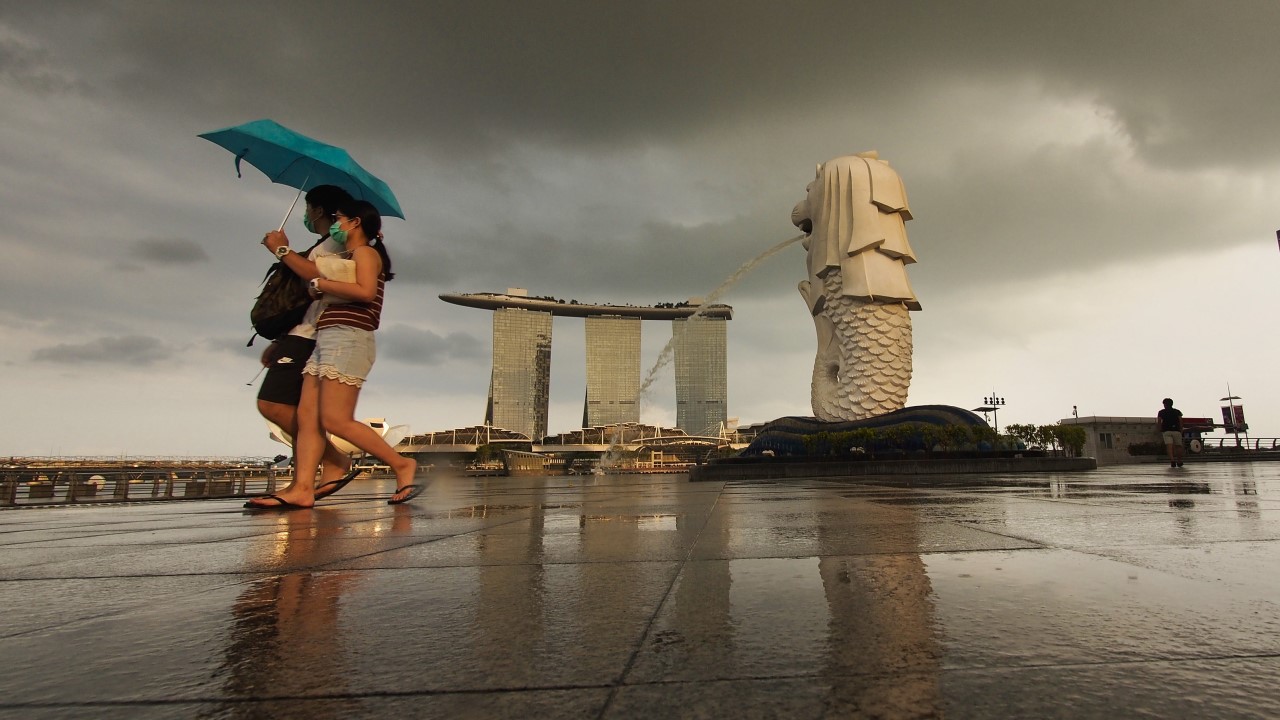A Net-Zero Future for Precincts in Singapore

Singapore Advisory Leader and Southeast Asia Precinct Leader, Mott MacDonald

Singapore is planning to develop and regenerate the Greater Southern Waterfront, Paya Lebar Air Base, and Changi Region. Photo credit: ADB.
Advancing a net-zero vision for buildings and precincts will involve innovative design and management solutions.
This article is published in collaboration with Mott MacDonald.
Singapore’s high-density urban environment is dominated by precinct-scale developments, in which buildings, accounting for some 15% of the city-state’s emission, are the main components. It is here that some of the greatest opportunities for decarbonization exist. Precincts are mixed-use developments with thriving community and economic activities. As highlighted in Singapore’s Master Plan 2019, a number of precincts are to be developed and regenerated in the near future, including the Greater Southern Waterfront, Paya Lebar Air Base, and Changi Region.
The key to a successful transition to net-zero is collaboration and innovation. Comprising both buildings and infrastructure, a great precinct is accessible, inclusive, resilient, and empowers its communities to enable improved well-being. Advancing a net-zero vision for buildings and precincts will involve innovative design and management solutions.
It starts with:
- Aligning the purpose, value, and strategies of developers with net zero;
- Establishing a carbon baseline against which to measure reductions, guided by ambitious and science-based targets;
- Implementing concreate action plans to net zero;
- Transparent reporting of progress;
- Collaboration with stakeholders, as carbon reduction requires collective action.
Design and master planning are the starting point. For new precinct developments, it is important to undertake master planning and design with net-zero goals in mind from the start. When adapting designs in the later stages of projects for the purposes of minimizing environmental impact, there is less flexibility, more limited benefit, and greater cost. Design solutions for rejuvenating existing precincts will differ from those for a new precinct. However, in driving successful net-zero design for both new and existing precincts, systems thinking plays a fundamental role.
Systems thinking: the only viable approach to drive collaboration and innovation for a net-zero transition. Both the operational and embodied carbon of a precinct must be considered in the transition to net zero. Embodied carbon encompasses all carbon emissions associated with the materials and the construction process of a building and infrastructure from extraction, manufacturing, transportation, installation, and demolition. Operational carbon describes the emissions within the in-use operation of a building and infrastructure.
In the planning and design of precincts, systems thinking mainly takes two forms: system integration for operational optimization and a circular economy approach for resource optimization.
System integration for operational optimization. Precinct-level energy, water, waste, and transport systems can be optimized through an integrated approach. For example, renewable energy generated in a precinct can be used to power water pumps and organic waste treatment; precincts-level smart grid can connect solar energy, energy storage systems, and electric vehicle charging stations to support the electrification of the precinct’s transport systems. These systems are required to look beyond the specific precinct itself and consider how they are connected to the broader city network and other precincts.
A circular economy approach for resource optimization. Shifting to a circular economy approach means waste and pollution are “designed out,” assets and materials are kept in use for as long as possible, and natural systems are regenerated. This approach is particularly important when addressing embodied carbon, which poses a significant challenge when transitioning precincts to net zero. For instance, designing for resource efficiency is critical when minimizing embodied carbon emissions, as it considers the whole-life impact of resources and uses standardized and modular designs, helping to minimize waste during construction. Considering the whole value chain of resources is also key to operational optimization. This approach is helpful to address the operational carbon emission as well. For example, recycled water can be used for district cooling makeup, organic waste can be composted onsite for use in landscape maintenance and as urban farming fertilizer.
Transforming the way we create, collaborate, and approach our built environment presents an opportunity on Singapore’s decarbonization journey.
This article was first published by Mott MacDonald.

Xiaoqing Li
Singapore Advisory Leader and Southeast Asia Precinct Leader, Mott MacDonaldThroughout her career, Xiaoqing Li has devoted herself to sustainable development—from planning and design to implementation and operation. In recent years she has focused on smart cities, making use of smart technologies to achieve sustainability goals more effectively and efficiently. She has been engaged by senior stakeholders and management from both public and private sector organizations to deliver high profile projects in Singapore, People's Republic of China, and Indonesia.


